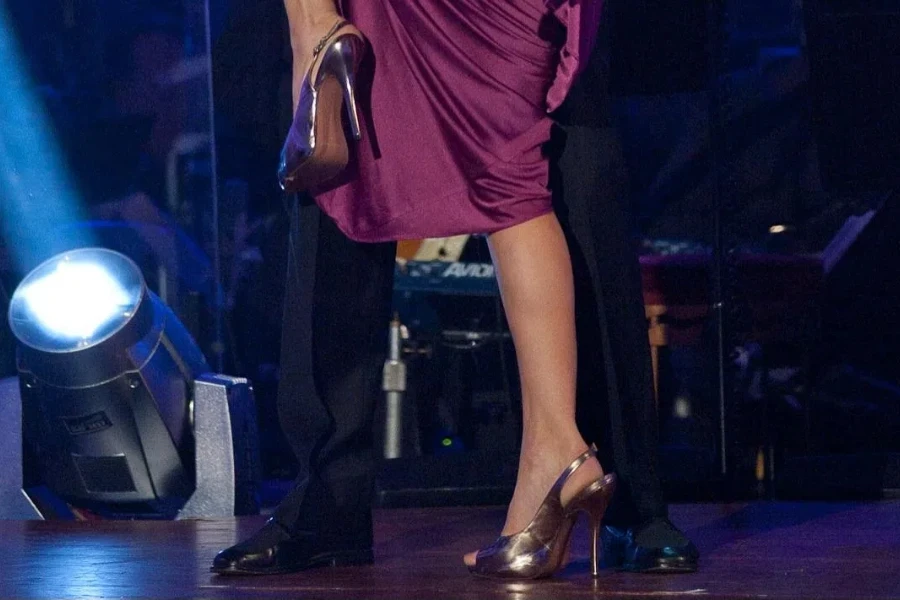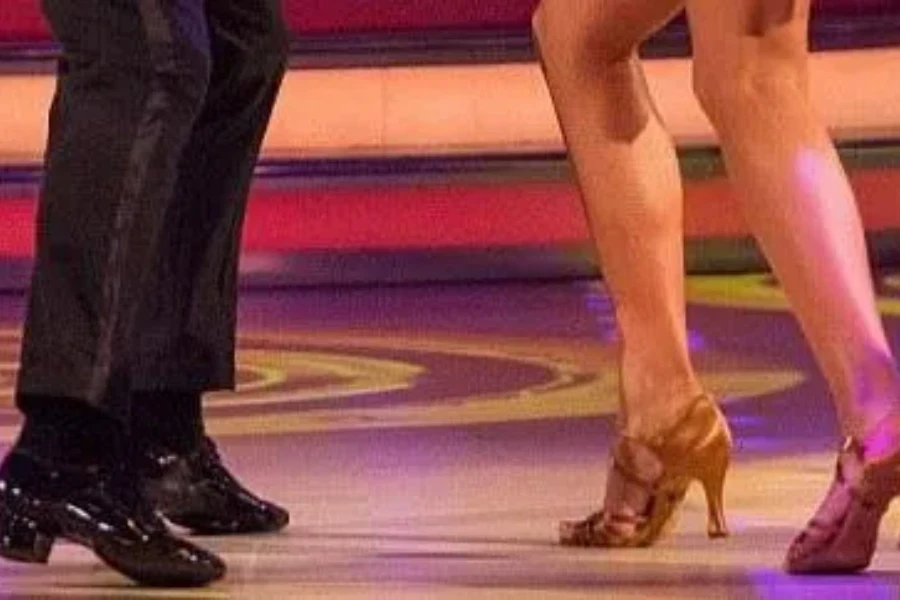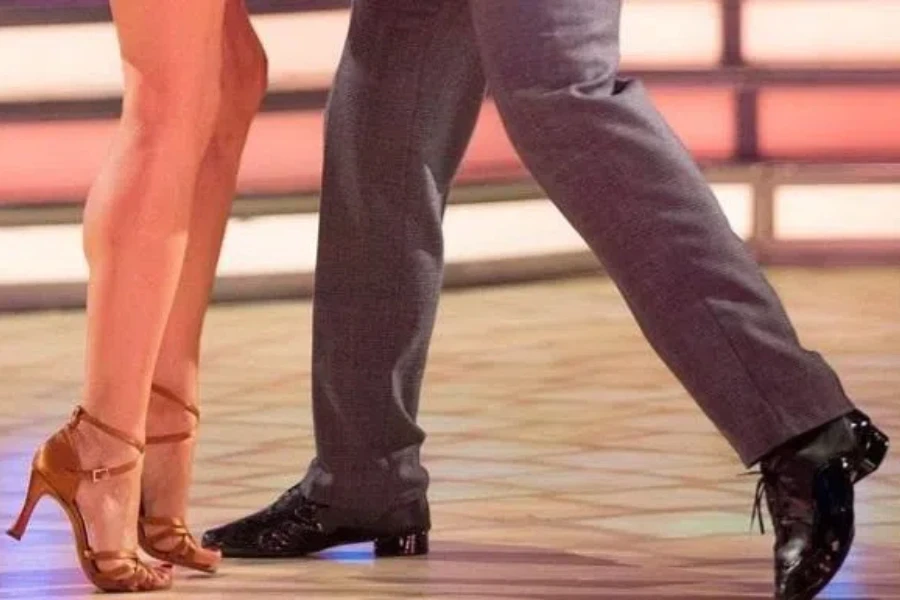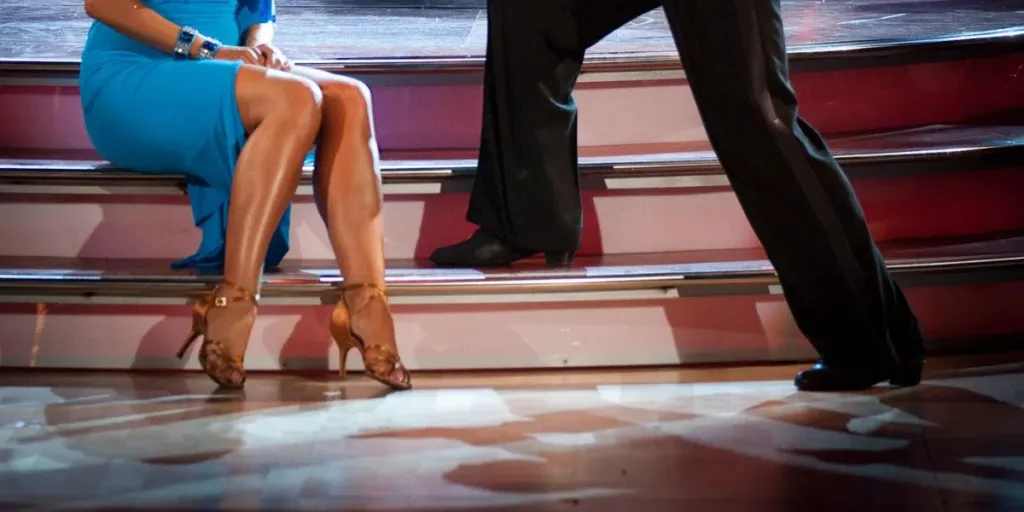Dance shoes are an extremely important part of any professional dance competition, looking the part, providing the required flexibility, and reducing the chance of strains or injuries. Here, we’ll discuss how businesses can best capitalize on dance shoes by choosing the most suitable varieties for customers as well as what features to look out for.
Table of Contents
An overview of the global dance shoe market
How to choose the ideal dance shoes for consumers
4 tips to help boost dance shoe sales
Summary
An overview of the global dance shoe market
The global dance shoe market was valued at USD 4.54 billion in 2023 and is forecast to reach USD 6.64 billion by 2032, growing at a 5.2% CAGR over the forecast period. The market’s growth is predominantly attributed to the rising demand for specialized footwear in the dance industry.
According to the same report, the men’s segment generated the highest revenue in 2023, with North America also holding the largest market share, and Asia Pacific is forecast to register significant growth in the coming years.
How to choose the ideal dance shoes for consumers
1. Heels and balance

Choosing the right heel height is important for comfortable and safe dancing, especially for women. Men’s dance shoes usually have 1-inch-high heels for ballroom and up to 2-inch-high Cuban heels for Latin dances. For women, heel heights range from 1.5 to 4 inches.
Retailers may want to encourage beginners to start with heels of around 1 to 1.5 inches to get used to dance shoes’ unique feel and balance. Remember that the heel’s position on dance shoes differs from that of regular shoes, helping to promote “forward poise” and distribute the wearer’s weight properly.
Starting with lower heels lets dancers acclimatize to the shoes and movements before moving on to higher heels. However, offering a wide range of heel options gives customers enough flexibility to upgrade as their skill and comfort levels improve.
2. Fit

Dance shoes should always fit snugly. If they are too big, the wearers’ feet may slip, throwing them off their balance and increasing the likelihood of injury. As such, dance shoes should feel like a natural part of the wearer’s body. Check the table below to see suggested shoe sizes that offer snugness without discomfort:
| Shoe type | Women’s street shoe size | Women’s dance shoe size | Men’s street shoe size | Men’s dance shoe size |
| Ballet flats | 5-10 | 1-2 sizes smaller (3-8) | 7-12 | Two sizes smaller (5-10) |
| Jazz shoes | 5-10 | Same size of ½ size smaller (4.5-9.5) | 7-12 | Same size (7-12) |
| Tap shoes | 5-10 | Same size (5-10) | 7-12 | 1-1.5 sizes larger (8.5-13.5) |
| Ballroom/Latin | 5-10 | ½ size smaller (4.5-9.5) | 7-12 | Same size (7-12) |
| Character | 5-10 | Same size or ½ size larger (5.5-10.5) | 7-12 | Same size (7-12) |
Note: Dancing shoes don’t have a universal size chart like other shoes. Hence, the table is a rough guide to helping retailers understand conversions between street and dance shoe sizes for women and men.
3. Dancing style

Dance shoes vary depending on the type of dance that they are designed for. Therefore, knowing which shoes are suitable for which style prior to stocking is imperative. Some shoes work for multiple dance types, but the majority of new dancers will seek specific varieties as recommended by their instructors. The table below outlines several types of different shoe and their dance types:
| Dance shoe type | Features | Best for |
| Ballet slippers | Soft, flexible material (leather or canvas) with a split or full sole design | Ballet (all levels) |
| Pointe shoes | Rigid toe box, satin exterior, and ribbons for ankle support | Advanced ballet (pointe work) |
| Jazz shoes | Split sole, low heel, and usually made from leather or neoprene | Jazz, modern, lyrical, and contemporary dances |
| Tap shoes | Metal taps on the toe and heel | Tap dance |
| Ballroom shoes | Closed-toe, flexible sole, and low to moderate heel (men’s and women’s styles vary) | Ballroom and Latin (waltz, tango, rumba, etc.) |
| Character shoes | Sturdy heel (varying heights) and buckle closures | Character dance and musical theater |
| Foot thongs (or foot undies) | Half-shoe design covers the ball of the foot and is often flesh-toned | Modern, lyrical, and contemporary dances (for a barefoot feel with protection) |
| Dance sneakers | Similar to athletic sneakers but with enhanced flexibility and support | Hip-hop, street dance, and Zumba |
| Flamenco shoes | Sturdy construction and thicker heels with nails for rhythmic sounds | Flamenco |
4. Material

The most popular dance shoes feature suede or satin and leather, with some more and more manufacturers offering vegan leather options. Suede shoes fit snugly and mold to the wearer’s feet for extreme comfort, versus leather that stretches with wear. Retailers can also provide various colors to match a customer’s preferred outfit.
4 tips to help boost dance shoe sales
1. Attend “test drive” events

Organizing “test drive” events can be a great way to evaluate buyers’ needs. First weigh up your budget, business goals, and suitable venues for the event. A partner studio might be the best place to start, maximizing your reach to include people already involved in dance. Then, plan the event flow to maximize the marketing efforts, for example:
- Intro (15 mins): Brief welcome highlighting the importance of the right dance shoes.
- Mini-Lessons (3 x 20 mins): Rotate styles like beginner ballet, salsa, and tap; emphasize how different styles require different shoes.
- Open floor + consultations (45 mins): Upbeat music, staff mingling to help with sizing and questions.
- Wrap-up (10 mins): Raffle announcement, discount reminders, thank attendees.
Lastly, you may want to include purchase incentives, such as an event-exclusive discount (ex: 10% off that day only) or a raffle for a free pair of entry-level dance shoes to encourage email sign-ups, which can later be used to contact interested parties.
2. Customization is key to more sales

Businesses new to customization will want to start with basic add-ons like colored laces, rhinestones, and pre-made buckles. Businesses may also want to consider customization plug-ins, with many e-commerce websites like Shopify now allowing customers to add features with built-in upcharge prices as well as galleries or mock-ups to showcase how customizations may look.
3. Use the treasure hunt tactic

Online stores
Online “treasure hunt” tactics can include placing discount codes throughout your website, whether in image descriptions, behind graphics, or on about us pages, etc. You can also use dance-related riddles or clues to lead people to the codes, making the shopping experience more memorable and engaging customers, increasing the chance of them returning for future purchases.
In-store
Treasure hunts can also be conducted offline in-store by hiding physical tokens around the store or a designated space. Each token could correspond to a different discount tier.
4. Offer leveling-up rewards

For leveling-up rewards, businesses will want to set up discount or benefit tiers that increase with the number of purchases. These tier names could even relate to dance achievements, like “First Position,” “En Pointe,” and “Center Stage,” etc. to make them more memorable and relatable. Remember to only start with deals that will be sustainable for your business. It could look something like this:
- Tier 1: Free shipping over a certain amount
- Tier 2: Early sale access, exclusive newsletter content
- Tier 3: Larger one-time discount or birthday special
Lastly, promote these leveling-up rewards across your store’s social media channels, website banners, email sign-up forms, and even fliers included in shipped orders.
Note: Marketing should be a focused effort to help build awareness. So, choose 1-2 strategies to start, and see how they perform before expanding!
Summary
Dancing is beloved by millions around the world thanks to its winning combination of sport, exercise, and entertainment. And while you certainly can dance in regular shoes, the best outcomes come when you have the right footwear for each specific dance style, also taking into consideration heel size, fit, and material.
For more articles on how to source the best products for your business in 2024, make sure to subscribe to Alibaba.com Reads’ sports section.




